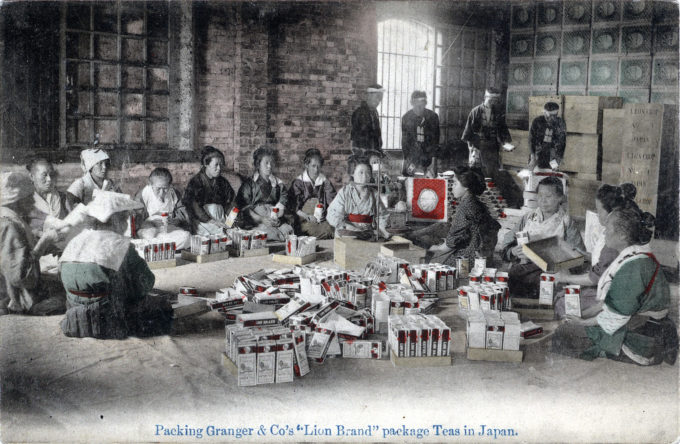See also:
“Tea-farming”, c. 1920.
Tea picking at Uji, c. 1920.
Green tea culture, c. 1950.
“The growers and manufacturers employ from ten or fifteen to a hundred laborers, according to the size of their plantations; but the majority of the gardens and factories are small and the work of plucking and firing is often accomplished by the family, and their special brand bears any name which they may choose to call it.
“The cultivators of tea on a large scale usually sell the crop, when gathered, to a manufacturer of to a middle-man; when fired, it is sold to wholesale merchants, who in turn sell it to export agents at Yokohama, Kobe or Nagasaki, respectively the largest tea shipping ports. Among tea exporting firms in Yokohama there are thirteen English, eleven American, three German, but only two Japanese firms.
“The choicest Japanese tea is consumed at home, the price of the superior qualities being from two dollars and a half to three fifty per pound. The tea exported in such quantities to the United States and Canada is mostly the second and third crops colored with indigo and powdered with gypsum to give it the appearance which Americans have considered desirable; in Japan this tea is worth but ten cents per pound, but it is generally retailed in America at from forty to sixty cents.
“… The American trade in green tea is now practically monopolized by Japan, was formerly supplied by China, but the Japan product was cheaper and quickly became a substitute for Chinese teas in America but has never become popular in Europe, where Ceylon, India and China teas are favorites.”
– “The Cultivation of Tea”, The Japan Magazine, April 1911



